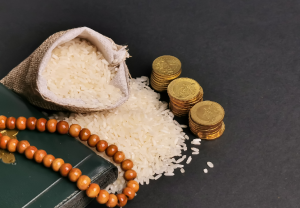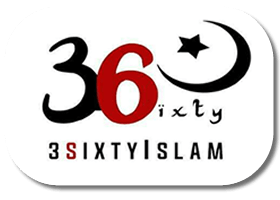SIGNIFICANCE OF ZAKAT-UL-FITR, COMMON FOOD ITEMS YOU CAN USE
By Ajape Sefiu A.

With Ramadan coming to an end, it’s critical to understand some of the significance of Zakat-Ul-Fitr.
It Serve as a levy on the fasting person. This is based on the hadith: The Prophet of Allah (pbuh) said;
“The fasting of the month of fasting will be hanging between earth and heavens and it will not be raised up to the Divine Presence without paying the Zakat al-Fitr.”
Zakat-Ul-Fitr also purify those who fast from any indecent act or speech and to help the poor and needy.
The latter view is based upon the hadith from Ibn `Abbas who related;
“The Prophet of Allah enjoined Zakat al-Fitr on those who fast to shield them from any indecent act or speech, and for the purpose of providing food for the needy. It is accepted as Zakah for the one who pays it before the `Eid prayer, and it is sadaqah for the one who pays it after the prayer. ”
However, Zakat-Ul-Fitr also helps the poor and needy to have something to eat. This is why it is recommended to be given to the poor and needy.
Zakat-Ul-Fitr in a glance
Zakat-Ul-Fitr is a charitable donation of food that Muslims are obligated to give to the poor and needy at the end of Ramadan.
It aims to ensure that everyone has enough food to celebrate Eid-Ul-Fitr – a day marking the end of the holy month of Ramadan.
However, It is to be noted that Zakat-Ul-Fitr must be given to the poor and needy before Eid-Ul-Fitr prayer. It can be given two days to the end of Ramadan, or the day of Eid before prayer.
Any food given to the poor and needy after Eid-ul-Fitr prayer will only count as normal charity and not Zakat-Ul-Fitr.
There are a few different options for what type of food can be given as Zakat-Ul-Fitr. The best option is to give the staple food of your locality.
This is because Zakat-Ul-Fitr is meant to be a source of sustenance for the poor, so it makes sense to give them something they can use and enjoy.
Here are some commonly recommended foods for Zakat-Ul-Fitr:
Wheat
Wheat is one of the most widely consumed grains globally and is a staple food in many cultures. It is rich in carbohydrates, protein, fiber, vitamins, and minerals. Wheat can be used to make bread, pasta, couscous, and various other food items.
Rice
Rice is another staple grain that is a primary food source for a significant portion of the world’s population. It is a good source of carbohydrates and provides essential nutrients such as B vitamins and minerals. Rice can be prepared in numerous ways, including steaming, boiling, frying, and baking.
Beans
Beans, including varieties such as chickpeas, black beans, kidney beans, and lentils, are rich in protein, fiber, vitamins, and minerals. They are a valuable source of plant-based protein and can complement grains to create balanced meals. Beans can be used in soups, stews, salads, curries, and various other dishes, making them a versatile and nutritious addition to Zakat-Ul-Fitr packages.
Dates
Dates have significant cultural and religious importance in Islamic traditions and are often mentioned in the Quran and Hadith. They are also nutrient-dense and provide energy, making them a suitable item for Zakat-Ul-Fitr.
Oats
Oats are a nutritious grain known for their high fiber content and various health benefits. They are rich in antioxidants, vitamins, and minerals, including manganese and phosphorus. Oats can be consumed as oatmeal, granola, or added to baked goods like cookies and bread.
Corn (Maize)
Corn is a versatile grain that is used in many cuisines worldwide. It is a good source of carbohydrates, fiber, vitamins, and minerals. Corn can be eaten fresh, dried, or processed into products like cornmeal, polenta, and tortillas.
Millet
Millet is a gluten-free grain that is commonly consumed in Asia and Africa. It is rich in protein, fiber, vitamins, and minerals such as magnesium and phosphorus. Millet can be cooked like rice or used in porridge, pilafs, and baked goods.
Sorghum
Sorghum, also known as milo, is a drought-tolerant grain that is widely grown in arid regions. It is rich in carbohydrates, protein, fiber, and antioxidants. Sorghum can be used in various dishes, including porridge, couscous, and gluten-free flour.
Garri
This can also be given to the poor and needy as Zakat-Ul-Fitr.
Meanwhile, it’s important to note that the specific items included in Zakat-Ul-Fitr may vary depending on local customs and traditions.
Additionally, monetary equivalents of these food items are often used to calculate the Zakat-Ul-Fitr contribution in modern times, considering the convenience and practicality of distribution.
However, for detailed guidance on Zakat-Ul-Fitr and the recommended food items, you can consult with knowledgeable scholars or religious authorities.

